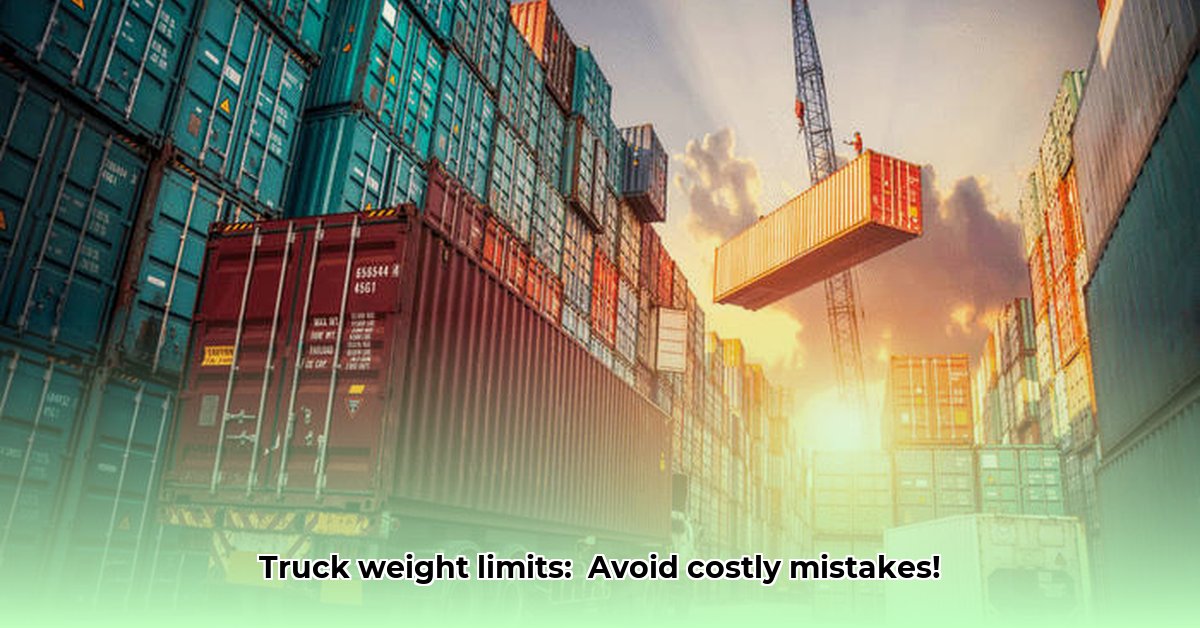
Knowing your tractor-trailer's weight limits is crucial for legal operation, preventing costly fines, and ensuring safety. This guide provides a step-by-step approach to maximizing your payload while staying within legal boundaries. For more detailed information on tractor-trailer weights, see this helpful resource: Tractor Trailer Weights.
Understanding Weight Limits: Beyond the Gross Vehicle Weight Rating (GVWR)
The often-cited 80,000-pound GVWR (Gross Vehicle Weight Rating) for many 18-wheelers in the US represents the total allowable weight. However, this number alone doesn’t guarantee compliance. Each axle has its own weight limit, and exceeding these limits, even with a total weight under 80,000 pounds, results in violations. Think of it like a balance scale: even distribution is key.
Typical axle weight limits include:
- Steer Axle (Front): Approximately 12,000 pounds. This lighter limit ensures optimal steering control.
- Drive Axles (Tractor Rear): Usually around 34,000 pounds per axle. These axles bear the brunt of the weight.
- Trailer Axles: Typically around 34,000 pounds per axle. These axles support the trailer's load.
Important Note: These are typical values. State regulations vary. Always check your route's specific weight limits using online resources like "[State Name] trucking weight limits."
Why Even Weight Distribution is Critical: Preventing Costly Consequences
Uneven weight distribution, even if the total weight is under the GVWR, poses significant risks:
- Fines: Overweight tickets can cost thousands of dollars.
- Mechanical Issues: Uneven weight stresses the truck's suspension and axles, potentially leading to costly repairs or breakdowns.
- Safety Hazards: An imbalanced load compromises handling, increasing accident risk.
Practical Strategies for Effective Weight Management: A Step-by-Step Guide
Successfully managing weight involves proactive steps and adherence to regulations.
1. Pre-Trip Weigh-In: The Foundation of Safe Hauling
- Step: Before each journey, weigh your rig at a certified scale. This is non-negotiable.
- Efficacy: Prevents overweight violations and minimizes the risk of fines.
2. Strategic Load Planning: Optimizing Weight Distribution
- Step: Distribute heavier items closer to axles with higher weight capacities. Utilize load-planning software (many trucking companies offer this, or numerous options are available online) for complex loads.
- Efficacy: Improves stability and reduces the likelihood of exceeding axle weight limits.
3. In-Transit Monitoring: Addressing Potential Shifts
- Step: For loads prone to shifting (liquids, loose materials), perform regular checks during transit.
- Efficacy: Allows for timely corrections, preventing overweight conditions from developing en route.
4. Meticulous Record Keeping: Protecting Yourself Legally
- Step: Maintain detailed records of each weigh-in and your load manifest.
- Efficacy: Provides crucial evidence of compliance in case of inspections or disputes.
Essential Tools and Technologies: Enhancing Weight Management
Several tools can simplify and improve your weight management process.
| Tool/Technology | Advantages | Disadvantages |
|---|---|---|
| Certified Weighing Scales | Accurate weight measurements | Requires stops, adding time to your schedule |
| Load Optimization Software | Aids in efficient load distribution planning | Requires training; some software is costly |
| Onboard Weighing Systems | Real-time weight monitoring during transit | Can be expensive to install and maintain |
| Telematics & Fleet Management Systems | Data-driven insights into driving, weight, routes | Requires integration; complexity can be a factor |
Case Study: The Importance of Proper Weight Distribution
One trucking company transporting heavy equipment failed to distribute the load properly, exceeding trailer axle limits. This resulted in substantial fines and trailer damage, highlighting the critical need for rigorous weight management practices.
Conclusion: Mastering Weight Management for Safety and Profitability
Effective weight management is not just about adhering to the 80,000-pound GVWR. It's a multifaceted process requiring proactive planning, consistent compliance, and the utilization of available tools. By carefully weighing loads, strategically planning distribution, and employing technology, you ensure safe, legal, and profitable operations. Remember, weight management is paramount for your safety and the safety of others on the road.